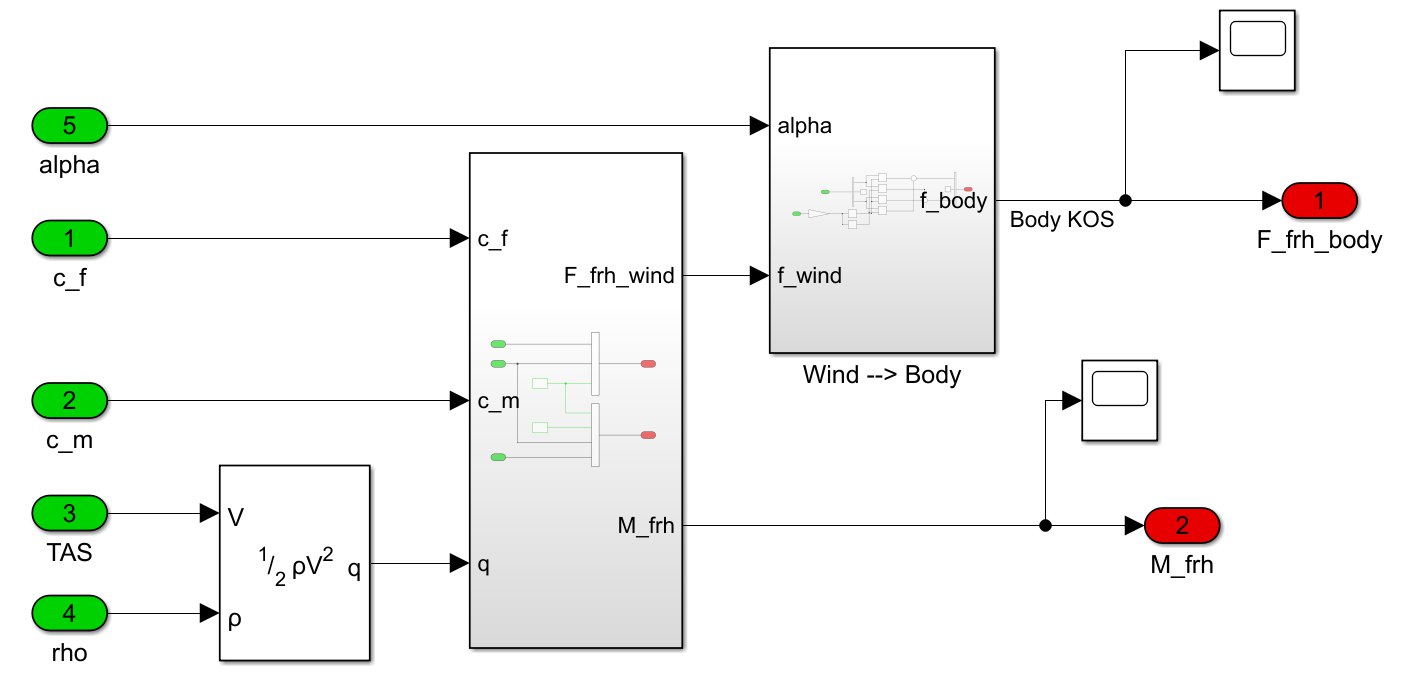Published: 15.10.2020 by FVA
The overall propulsion design depends significantly on the performance requirements resulting from the planned flight profile. The flight performance computer of the FVA-30 used in the preliminary design was based on a 2-DOF model implemented in Matlab. For a more detailed validation and especially for the upcoming certification-relevant engine test runs as well as later planned ground tests of the complete propulsion system (“Iron Bird”), a further development of the model into a more accurate one with more degrees of freedom seemed essential. In addition, with the planned goal of a full simulation model of the FVA-30 (digital twin), coupling with a flight simulator should be possible. Later, the model will also be integrated directly into the control unit allowing particularly efficient flight with a low workload for the pilot and for allowing for tests of various control modes in flight.
Since the model was needed to dynamically calculate the motor load for the emerging HiL test bed for motor and inverter, the entire simulation needed to be compatible with Matlab 2016 and dSpace, as well as sufficiently fast for real-time estimation of motor performance during test bed operation. Since a detailed model is needed for future design decisions, the simulation was rebuilt into a 3-DOF model.
Hybrid Flight Performance Computer
The flight performance computer consists of three components: the aircraft, which is described both aerodynamically and via its inertias, the powertrain and a pilot model. The simulation is vectored so that the model can be easily converted to a 6-DOF model in the future. It was important for the development of the simulation to keep the level of detail high, especially in those areas where important decisions will be made in the near future. For example, the pressure point shift on the wing was taken into account, whereas the thermal behavior of the motors was neglected, since it had already been tested on the test bench.
Drive Train
The drive train consists of three models: the motor, the battery and the propeller. Each model is described by a characteristic diagram and has been validated in advance or derived from manufacturer data and validated with measurement data. Efficiency can be calculated for both the submodels and the entire powertrain. This is of interest both for the validation of the data and for future design decisions.
Aerodynamics
The aerodynamic forces and moments are determined via the coefficient derivatives which were determined in the flight mechanical design. In the first version, the usual simplifications were made for a basic analysis. For example, the moment due to the drag of the V-tail is not taken into account. In addition to the aerodynamic parameters of the aircraft itself, the influence of the landing gear and the ground clearance should also be taken into account. Furthermore, an additional drag was inserted at ground contact to consider the influence of the friction of the landing gear.

Example: Determination of the forces and moments from the coefficients in the aerodynamic coordinate system and transformation into the body-fixed coordinate system
Equations of Motion
The current model realizes the first setup of the FVA-30 without a range extender. However, the model already has a way to account for variable inertias due to fuel consumption, which are constant in all-electric operation of the motor glider. Another feature of the simulation is the mapping of the influence of the propeller angles on the thrust.
Outlook
The flight performance computer is to be linked to the digital twin of the FVA-30 in such a way that various control modes and mission profiles can be tested realistically while still on the ground. For example, the influence of a speed-based control for the electric motors will be tested. Another interesting aspect is the testing of various operating and display concepts, so that pilots with a PPL license can quickly familiarize themselves with the operation of this new type of aircraft. Finally, an important focus of the simulation is the testing of error cases and their effects on the user.